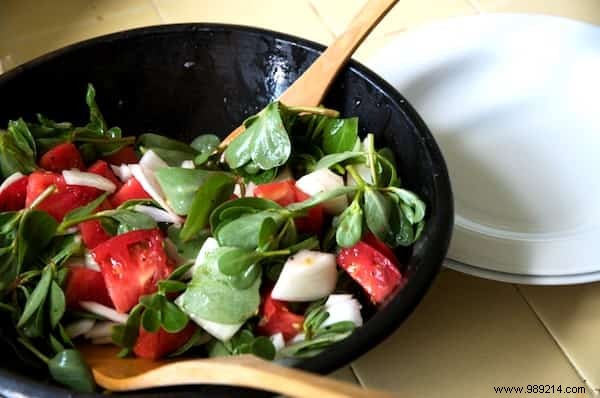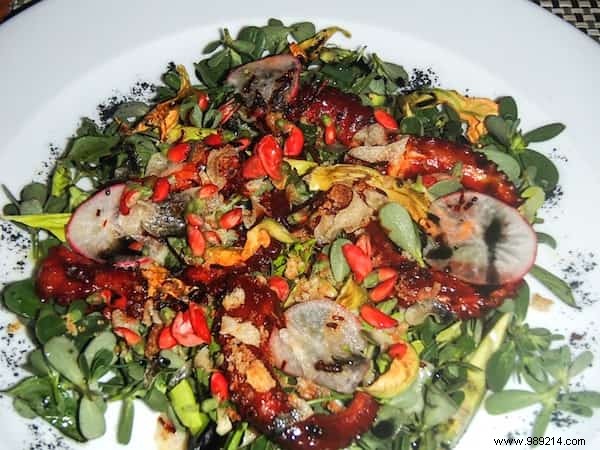
Some consider purslane a bad plant.
But in reality, purslane is a delicious and nutritious edible plant. .
It can be found for free almost everywhere in France during the summer.
So don't deprive yourself of it!

Purslane or Portulaca oleracea is a creeping and invasive plant with procumbent and tubular stems of burgundy color.
Its leaves are green and fleshy, succulent type and with yellow or pink flowers.
Once the flowers fade, the seeds ripen into a kind of green cabochon. This one ends up opening and lets the seeds spread to the ground.
Purslane grows low to the ground, and its branches can reach up to 50 cm in length.
Purslane loves heat, but not necessarily water, it is found in summer in France, especially around the Mediterranean.
It grows in lawns or even on sidewalks, in town.
Like dandelion or nasturtiums, purslane is completely edible. It is also on the menu of the Cretan diet.
Consumed in Persia more than 2,000 years ago, purslane is still cultivated in Africa, Asia and South America.
Purslane is a plant with interesting nutritional values. For example, a 100 gram serving covers approximately:
- 26% of our daily needs (AJR) in omega-3,
- 11% of iron RDA,
- 17% of RDA in magnesium,
- 81% of vitamin E RDA.
All this for a low calorie content:19 kcal.
Purslane is crunchy, slightly tart and very refreshing. It is advisable to harvest it before maturity and consume it quickly. It can be eaten raw or cooked, it doesn't matter.
The stems are edible, but one can choose to eat only the leaves.
These can also be used as decoration for the dressing of your dishes.
Input

Being rich in minerals and especially in iron, it is recommended to garnish it with lemon or parsley... These are natural sources of vitamin C which help to fix iron.
We wash it, dry it and then cut the stems into small pieces.
Personally, I prefer it with lemon and a drizzle of oil.
Purslane is also ideal in tabbouleh or on toast.
In a hot dish
Purslane can be added to an omelet or risotto. It is also possible to brown it in olive oil, or blanch it.

It is easy to find and grow. This is how I picked some from friends recently in order to replant it at home.
This plant needs sun, very little water. And it likes even very poor soils. It proliferates easily in the city between sidewalks and buildings.
The branches regrow quickly after picking. You can therefore harvest young, tastier plants.
Seeds also make it possible to quickly obtain new plants.
The only constraint is space, because purslane is creeping. It is therefore necessary to allow about 25 cm of space between each plant.
Are you one of the people who already consume purslane? Or will you try? I look forward to your recipe ideas and suggestions in the comments.